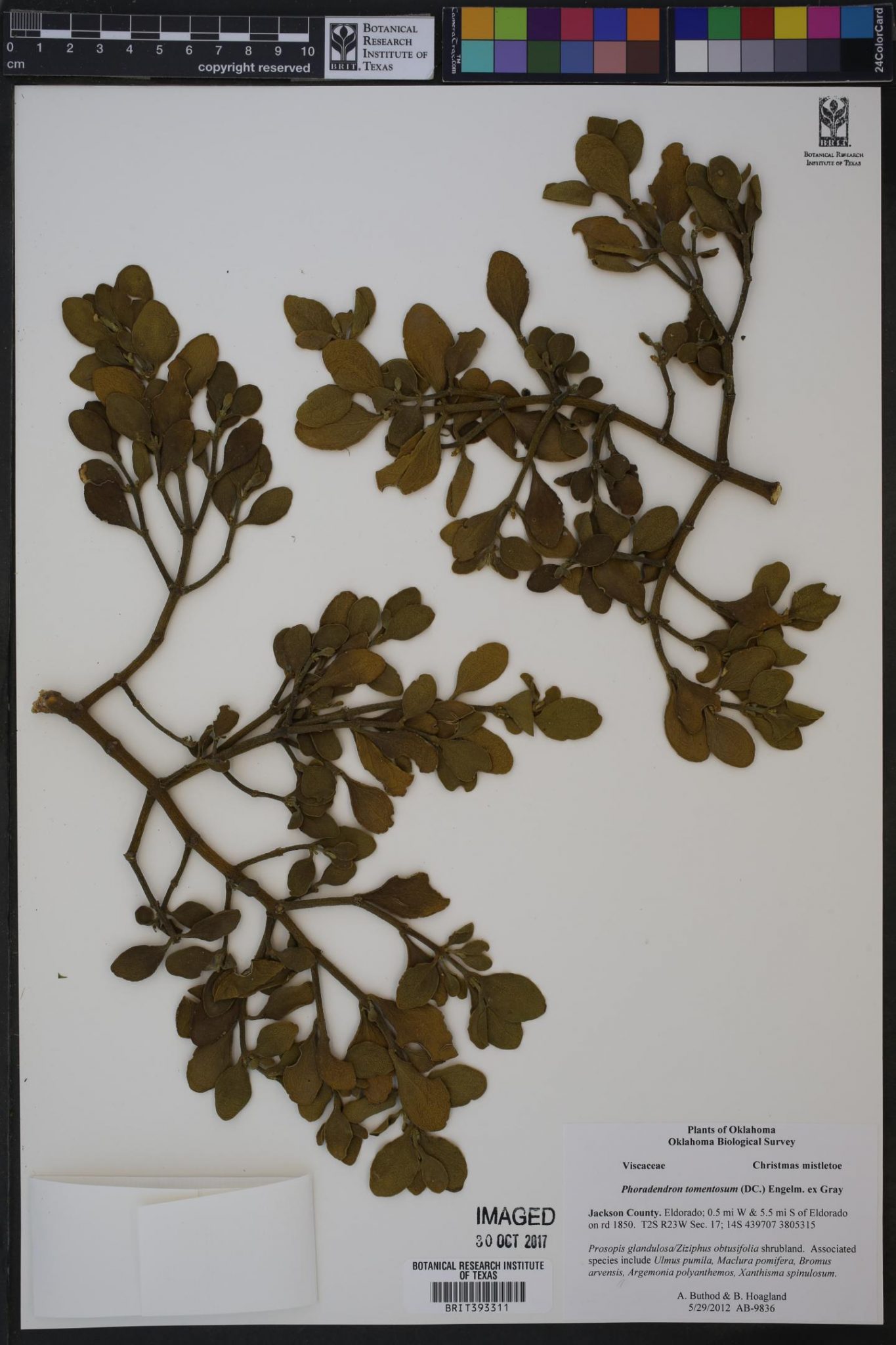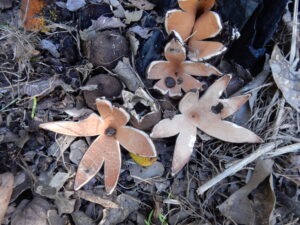Mistletoe brings to mind a be-ribboned bouquet hung beneath doorways to catch unsuspecting party-goers in a kissing trap, but the evergreen plant has a long history in Western holiday tradition. The original mistletoe of Greek and Celtic traditions, Viscum album, was a symbol of masculinity, vitality, health, and fertility, and its usage as a treatment for barrenness in human and animals is reportedly very ancient. The majority of mistletoes are obligate hemi-parasites, meaning they cannot live without a host but do engage in some photosynthesis with their foliage. The connection between mistletoe and the Winter Solstice was likely made as the species remains evergreen and bears fruit throughout winter, creating festive decoration is the coldest of winter wonderlands.
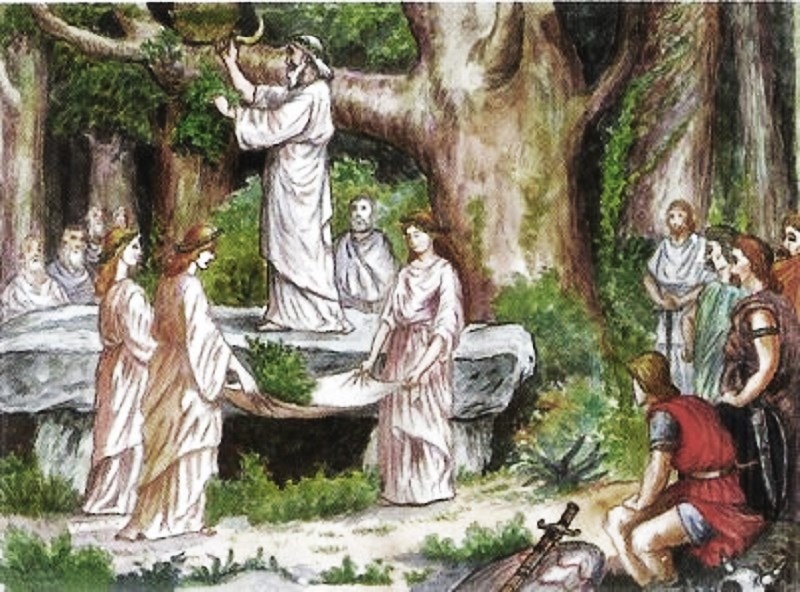
Multiple cultures and religions of Europe venerated mistletoe throughout history, creating myths to explain its unique biology. Druidic lore revered oak trees and special ceremonies for collecting the rare species of mistletoe specific to European oak trees. Norse mythology includes one account of the goddess Frigg, who learned of a prophesy that her son Baldur would die a young man. The heartbroken Frigg demanded everyone swear to never harm her son. However, Mistletoe was considered too weak to hurt anyone and thus ignored. The trickster Loki grows jealous of Baldur’s new fame as now no rock or weapon can injure his skin. Loki discovers Baldur’s weakness and fashions an arrow from mistletoe. He then convinces another god to help test Baldur’s invincibility with a harmless stick, which pierces his skin and kills him instantly. Frigg discovers the murder, and her tears become white berries upon the mistletoe branch. She then declares that mistletoe will forever after be a symbol of love and peace and a protector to any offered a kiss beneath its branches.
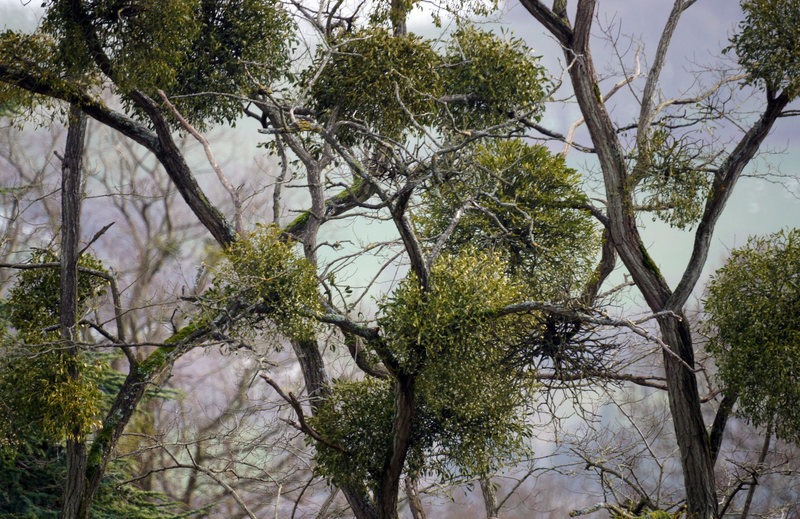
In the Greek epic Aeneid, the hero Aeneas searches for his father Anchises while returning home from war with Troy. On the advice of an oracle, he searches for a “golden bough” of mistletoe in order to safely enter the realm of the dead and speak to his father’s ghost. In addition, Greek and Roman marriage ceremonies celebrated kissing under mistletoe to ensure health and fertility, and decorated with mistletoe for the December holiday of Saturnalia. One old Catholic legend says mistletoe was once a tree used to supply wood for the cross that crucified Jesus Christ, and thus became cursed to be a parasite and seek penance by blessing any who passed underneath.
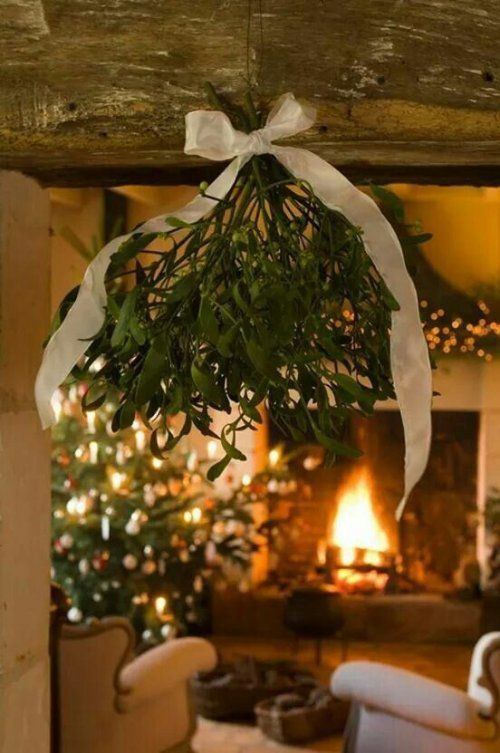
The history of mistletoe and Christmas is not well documented in Western tradition until the 16th and 18th century. Sources from America and Britain reference several traditions well-known at the time, which are further popularized by literature and marketing. Wreaths and bouquets were kept in homes year-round for protection and decoration, and then renewed during the next Christmas season. The Industrial Revolution brought rural customs and Victorian sensibilities head to head with the help of woman hired as housemaids, who introduced mistletoe’s kissing traditions to British upper class and aristocratic homes. One such tradition involves a woman standing beneath a fruiting bouquet of mistletoe, receiving suitors who would kiss her cheek then pluck a single berry from the bouquet. Similar activities required women caught underneath mistletoe to return a kiss or risk not receiving marriage proposals for a year. Overall, local customs varied between towns and geographic areas depending on religious and cultural history, often commingling pagan and catholic rituals.
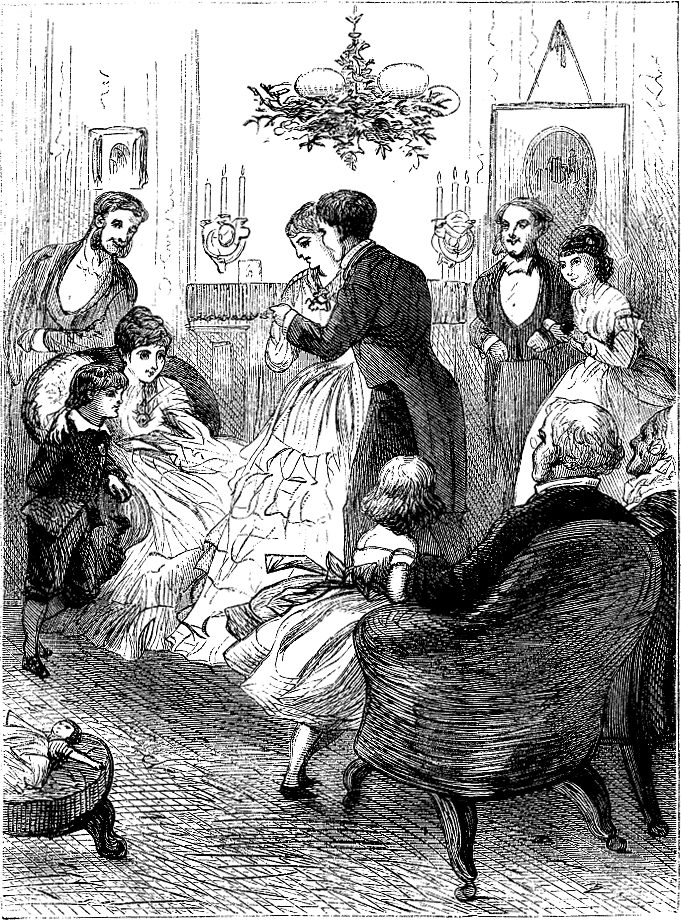
Ask anyone nowadays about mistletoe and replies will vary from tree parasite to unsure memories of a kissing game, as traditions simplify and morph in a globally connected world. It’s important to note that the mistletoe most readily associated in America is in fact different from the mistletoe of a Charles Dicken’s-style Christmas. A New England Christmas would likely be adorned by American mistletoe (Phoradendron leucarpum), a physically similar and close relative of Viscum album within the Sandalwood family, Santalaceae. In Texas you’re more likely to see leafy mistletoe (Phoradendron tomentosum), though it could also be one of the other four species present in the state. But mistletoe isn’t limited to Western Europe and North America. Members of the mistletoe group within Santalaceae can also be found throughout Europe and Asia, South America, southern African and eastern Australia, where many species of birds subsist largely on mistletoe berries and rely on clusters of mistletoe for nesting sites. All members of the mistletoe group are stem parasites, piercing their hosts’ branches in order to steal nutrients. Sadly, many species of mistletoe world-wide are imperiled by habitat destruction and low recruitment. A decline in native pollinating birds of New Zealand such as the tui and several bellbirds means fewer red mistletoe plants (Peraxilla tetrapetala), a once common and popular species harvested for its showy flowers. English apple orchards once cultivated mistletoe for additional income during wintertime, but mismanagement and waning interest in agriculture will likely lead to a shared decline for both.
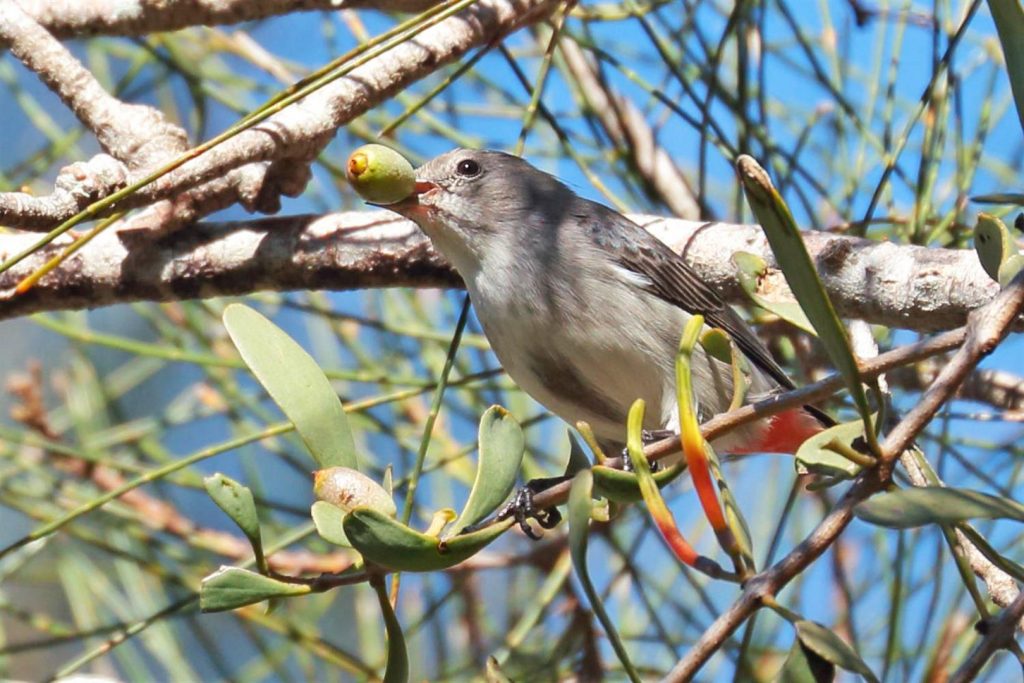
Although using live mistletoe during the holidays has largely fallen out of favor, it remains a recognizable motif of the holiday season. Handmade facsimiles from felt, paper, or even aluminum are popular crafting projects for traditional flair. So no matter the type of mistletoe you hang above the front door this year, I hope you feel more illuminated on holiday traditions.
See y’all next time on Cabinet Curiosities! — Joe

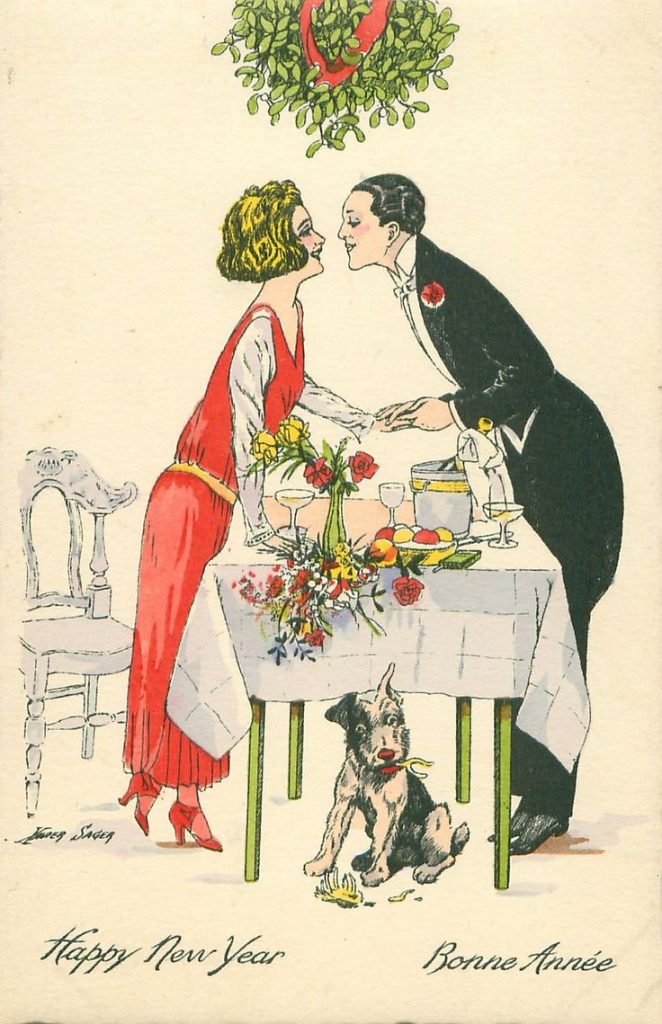
Sources:
- https://www.theguardian.com/uk/2010/dec/07/mistletoe-vanish-20-years-national-trust
- https://www.nzgeo.com/stories/the-mystery-of-the-disappearing-mistletoes/
- http://mistletoe.org.uk/homewp/index.php/traditions/
- http://www.history.com/news/ask-history/why-do-we-kiss-under-the-mistletoe
This post is part of our “Cabinet Curiosities” series that explores significant items from the Herbarium collection. Posts are written by staff, volunteers, and interns. Read more from the series here.

